Harassment Warning Letter Template for Workplace Use
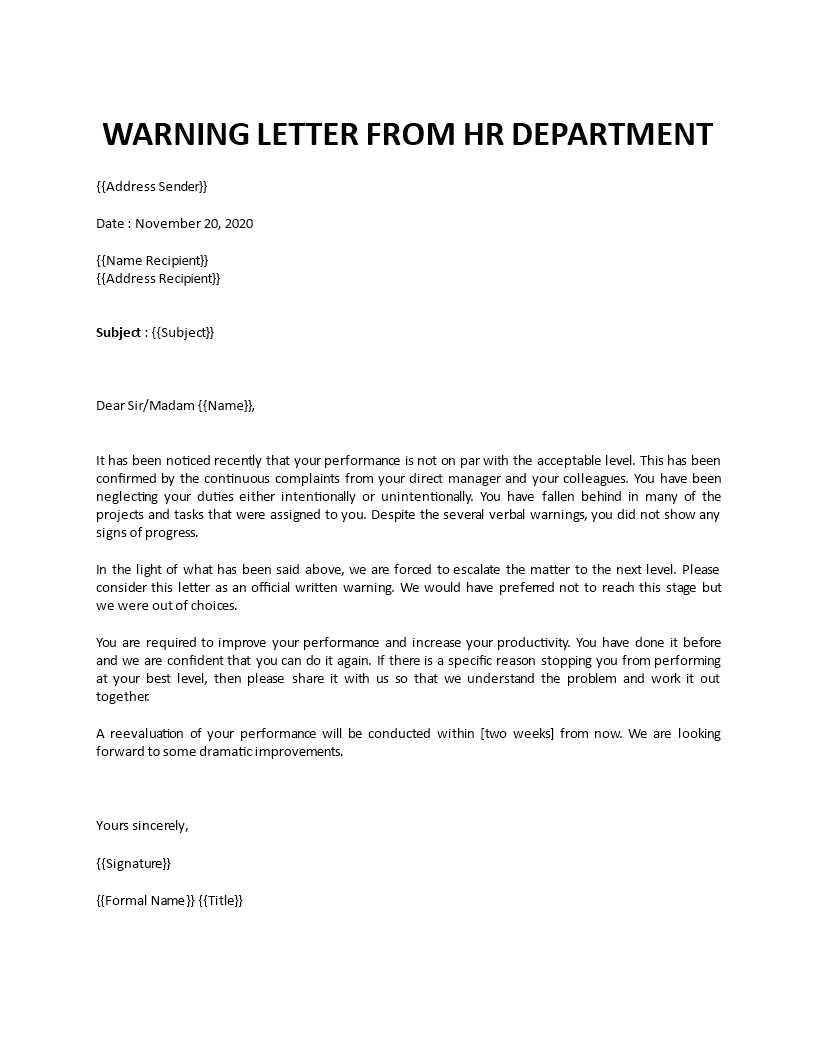
In professional environments, maintaining respect and proper conduct is essential. When an individual crosses boundaries, it’s important to address the situation swiftly and formally. A well-crafted document can help in managing such issues and ensuring that the concerned parties understand the seriousness of the matter.
Effective communication in these situations is crucial for preventing further misconduct. This approach not only resolves the issue at hand but also upholds the standards of professionalism within the organization. A structured approach, clearly outlining expectations and consequences, helps to foster a respectful atmosphere moving forward.
Providing proper documentation ensures that all steps are recorded, which can be essential in protecting both employees and employers. This formal approach contributes to creating a positive and safe workplace culture, where individuals are aware of their responsibilities and the consequences of failing to meet them.
How to Write a Harassment Warning Letter
When addressing inappropriate conduct in the workplace, it’s essential to communicate the issue clearly and professionally. A formal document should outline the behavior that is being addressed, the expectations for future conduct, and the potential consequences if the issue persists. This helps ensure that both parties are on the same page regarding the seriousness of the situation.
Begin by identifying the specific actions that have caused concern. Be detailed and avoid vague language, focusing on how the behavior has impacted the work environment. It’s important to be objective and avoid emotional language that might undermine the seriousness of the matter.
Next, clearly state the expected conduct moving forward. Explain how the individual should modify their behavior and what steps they can take to improve. It’s crucial to provide a clear path to resolution and demonstrate a commitment to maintaining a positive work atmosphere.
Finally, outline the potential consequences of failing to improve. Be specific about the actions that may be taken if the behavior continues, whether it’s additional disciplinary action or termination. By being transparent about these outcomes, you help reinforce the importance of correcting the behavior promptly.
Key Elements of an Effective Warning Letter
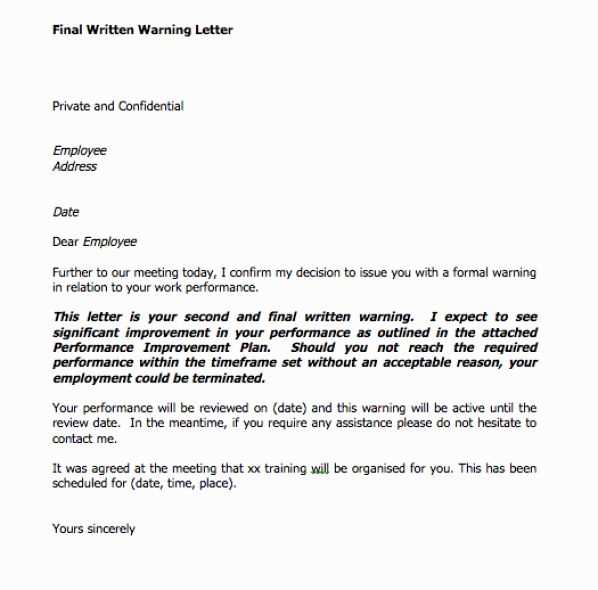
When addressing inappropriate behavior, a formal document should include several key components to ensure clarity and effectiveness. The purpose of the communication is to make the recipient aware of the issue, outline the expected changes, and inform them of the potential outcomes if the problem is not resolved. A well-structured approach can help prevent further issues and clarify the seriousness of the situation.
The first element is clear identification of the behavior that needs to be addressed. Specific examples should be provided to avoid ambiguity, ensuring that the individual understands exactly what actions are of concern. Vague or generalized statements can lead to confusion and make it harder to take corrective action.
Stating expectations for future conduct is also crucial. The individual must know what is expected moving forward and what changes are necessary. This section should be as specific as possible to avoid any misunderstanding.
Finally, outlining the consequences of non-compliance ensures that the person understands the potential impact of their actions. The document should include a clear explanation of the next steps if the behavior continues, helping to reinforce the importance of adhering to workplace standards.
Steps to Address Workplace Harassment
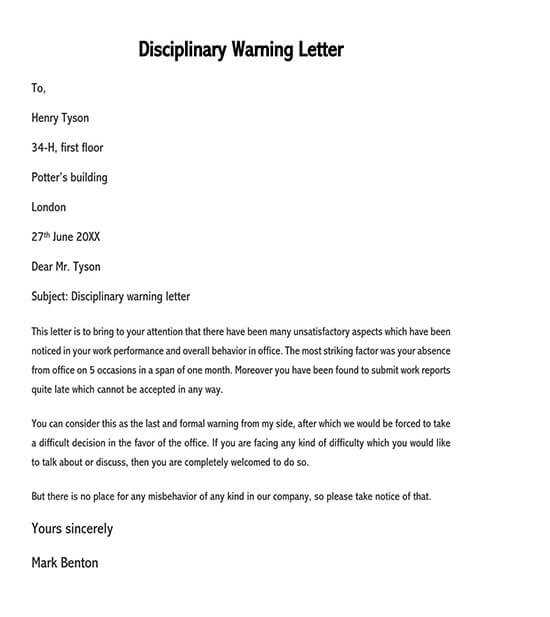
When inappropriate behavior occurs in the workplace, it’s important to take immediate and appropriate action to maintain a safe and respectful environment. The process should be clear, fair, and professional to ensure that the issue is resolved while respecting both the individuals involved and the organization’s policies.
The first step is to document the incident. Detailed records of the behavior should be kept, including dates, times, and any witnesses. This ensures that there is a factual account of the situation, which will be useful in addressing the issue appropriately.
Communicate with the individual involved to address the behavior directly. This conversation should be conducted in a private, professional setting, where the individual is given the opportunity to respond and explain their actions. It’s important to remain calm and objective, focusing on the facts and the impact of the behavior.
If the situation does not improve, more formal measures may be necessary. This may include issuing a formal notice or taking further disciplinary action, depending on the severity of the issue. It’s important to follow the organization’s policies and procedures in these cases to ensure consistency and fairness.
Legal Considerations in Harassment Letters
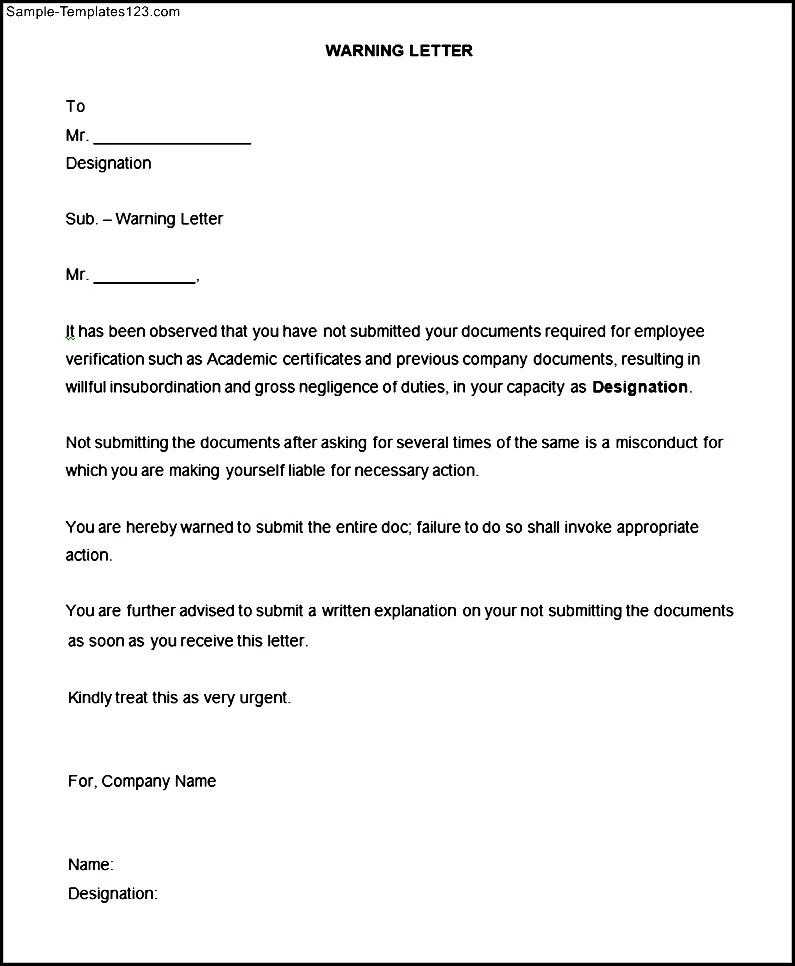
When addressing inappropriate behavior within the workplace, it’s important to be aware of legal considerations to ensure that the actions taken are compliant with employment laws. A formal document must respect the rights of all parties involved, and failing to adhere to legal guidelines can result in complications or even legal consequences for the employer.
Adhering to Company Policies
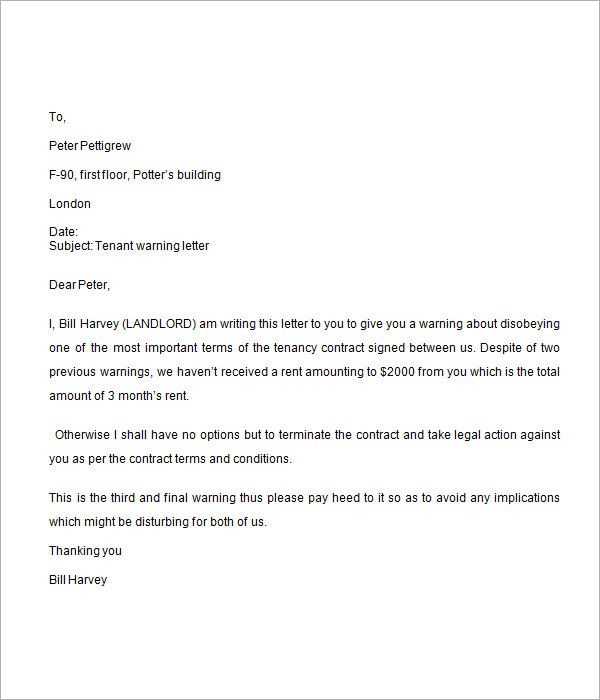
One key legal consideration is ensuring that any action taken aligns with the organization’s internal policies. Companies often have specific procedures for addressing misconduct, and it’s important to follow these steps closely. Failure to do so can expose the company to liability or claims of unfair treatment.
Avoiding Defamation or Discrimination
It is critical to be cautious when outlining the details of the issue in a formal document. The language should remain neutral and factual to avoid defamation claims. Additionally, ensure that the process does not discriminate against any individual based on their race, gender, or other protected characteristics, as this could lead to further legal challenges.
Common Mistakes to Avoid in Warning Letters
When addressing inappropriate behavior formally, it’s important to ensure that the document is clear, professional, and effective. Common mistakes in such communications can undermine the seriousness of the issue or create confusion, making it harder to resolve the situation appropriately. Avoiding these pitfalls ensures that the intended message is delivered properly and with the right tone.
| Common Mistakes | Why to Avoid |
|---|---|
| Vague language | Using unclear or general terms can make it difficult for the recipient to understand what specific actions are being addressed. |
| Emotional tone | Overly emotional language can escalate the situation, making the communication seem less professional and more personal. |
| Lack of specifics | Not including clear examples of the behavior in question may lead to confusion and make it hard for the individual to recognize the issue. |
| Failure to outline consequences | Not specifying the potential outcomes can undermine the seriousness of the communication and lead to a lack of accountability. |
Best Practices for Delivering the Letter
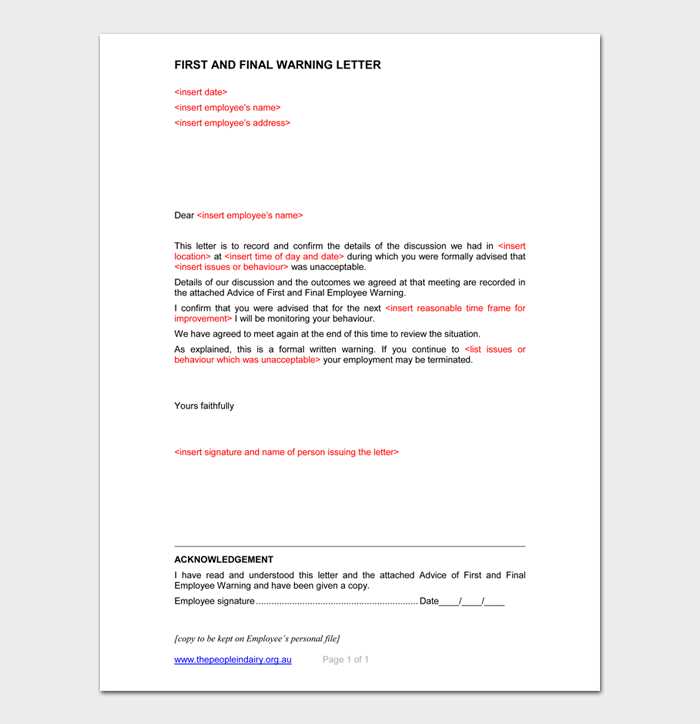
When delivering a formal communication regarding inappropriate conduct, it is essential to approach the process with professionalism and care. The method of delivery can impact how the recipient receives the message and how effective the communication will be. Following best practices ensures that the situation is handled with respect and clarity, minimizing potential misunderstandings.
Choosing the Right Method of Delivery
It’s important to select the appropriate method to ensure the message is delivered clearly and confidentially. Consider the following options:
- In-person meeting: This allows for direct conversation, where the recipient can ask questions and express their views.
- Email: If an in-person meeting is not feasible, a formal email with clear language is acceptable.
- Certified mail: This ensures the document is delivered securely and provides a receipt, confirming that the recipient received the communication.
Ensuring a Respectful Environment
Delivering the message in a respectful and professional manner is crucial for maintaining a positive work environment. Consider these important steps:
- Private setting: Ensure the conversation takes place in a private setting to avoid embarrassment or unnecessary attention.
- Stay calm and neutral: Keep emotions in check and communicate the issue in a neutral, factual tone.
- Provide support: Offer assistance or guidance for addressing the issue, if applicable, to encourage positive behavior moving forward.